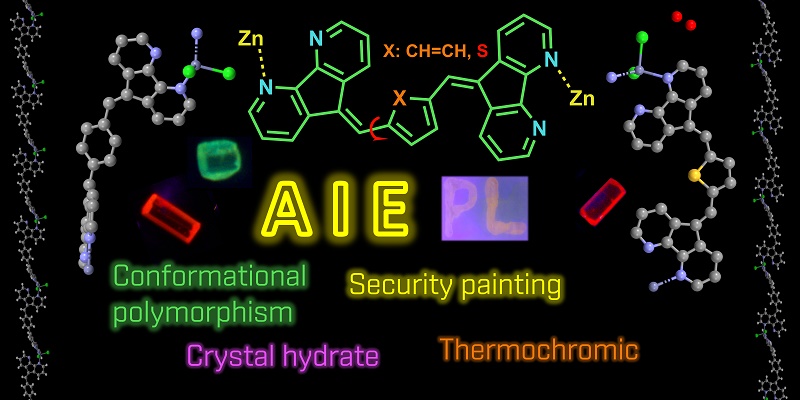В журнале Dyes and Pigments (IF 4,1) опубликована статья сотрудников Института: лаборатория ЛОЭ- мнс Д.С. Чешкина, к.х.н., снс К.С. Беккер-Мельникова, к.х.н., снс А.А. Сонина, к.х.н., нс И.П. Коскин, к.х.н. М.С. Казанцев (завлаб) и группа термоанализа ЦСИ- к.х.н. И.К. Шундрина:
Bis((9H-(4,5-diazafluoren)-9-ylidene)methyl)arylenes:
Design, synthesis, optoelectronic properties, sensorics and luminescent coordination polymers
Darya S. Cheshkina, Christina S. Becker, Alina A. Sonina, Igor P. Koskin, Inna K. Shundrina, Maxim S. Kazantsev
Dyes and Pigments
Volume 229, October 2024, 112261
https://doi.org/10.1016/j.dyepig.2024.112261
Highlights
-
Bis((9H-(4,5-diazafluoren)-9-ylidene)methyl)arylenes were designed, synthesized and characterized.
-
Their electronic, optical, structural and coordination properties were evaluated.
-
BDFMP demonstrated a high torsional freedom.
-
Interaction of studied compounds with ZnCl2 resulted in formation of coordination polymers.
-
Due to porous structure Zn-BDFMP demonstrated PL sensitive to de/rehydratation.
Abstract
Aggregation-induced emission (AIE) materials are highly demanded for practical applications in optoelectronics, sensorics, material science and bio-imaging. However, highly torsionally-flexible and hybrid organic/inorganic AIE materials are limited. In this work we designed, synthesized and comprehensively studied AIE-active bis((9H-(4,5-diazafluoren)-9-ylidene)methyl)arylenes demonstrating high torsional freedom coupled with electron-accepting character and N,N′-chelating ability. One-rotor nonplanar structure of phenylene-linked derivative (BDFMP) allowed us to demonstrate its polymorphic diversity both in neat state and in coordination polymers. X-ray diffraction analysis indicated formation of crystals with extensive π-stacking interactions and slipped/side-by-side packing motifs, the former crystals demonstrating a photoluminescence quantum yield of 25 %. The reaction of both BDFMP/BDFMT with ZnCl2 resulted in formation of unique coordination polymers and porous metal organic frameworks with photoluminescence sensitive to heating and (de/re)hydratation. The latter effect was exploited for security painting and anti-counterfeiting demonstration.


